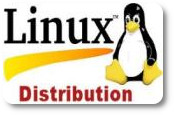1. Partitioning
Rob Williams (the article author) provides GParted as example. Almost anything is better than diskmgmt.msc. However, the author should have mentioned that the command line tool DISKPART provides much more power, though still without the ability to handle non-Microsoft filesystems.
2. Activation
When false positives hit, it hurts only legitimate customers. How Microsoft can continue to do this to users is beyond me. The news may be full of all the scary new ways Apple are restricting the iPhone and iPad, but OS X has no anti-piracy measures, no activation, no licence keys—and Linux has no concept of a pirate copy in the first place.
3. Customisation
That double-edged sword. It’s all down to how it’s presented and the effort that has gone into making it difficult for the user to shoot themselves in the foot. KDE versions prior to 4 are known for being particular extreme when it comes to customising opportunities, with the user dumped into a badly chosen set of defaults and expected to sort it out themselves. Things have improved, and KDE 4 shows a side of customisation that is less MySpace and more interior decorating.
4. Automatic User Login
Is control userpasswords2 actually documented? Where are you supposed to find this out? In Linux, the option is easier to find than arcane run-box magic.
But I have this memory niggling at the back of my mind; oh yes! That for a long time, GNOME network manager would ask you for your chainring password every time if you had autologin enbaled, and that this bug persisted for two or more releases of Ubuntu before getting fixed. I’m still angry about that. How could it be so low priority to make autologin unusable for two years!?
5. Troubleshooting
Definitely a tough one to quantify, especially given that I fix PCs for a living and generally know how to get out of a bind in Windows. Windows always fails though when it comes to data. In Linux, you can backup the home directory and know that you should be able to transplant it to another system. In Windows, your data is scattered everywhere and since Vista, is basically untransplantable (USMT is useless) unless you were wise enough to have a backup. You do do backups, right?
6. No-Nonsense OS Updates
Except for that time when I updated Ubuntu from 8.10 to 9.04 and the update process called for key-presses to continue, which was impossible to know unless you expanded the details view to show the command buffer and had realised it had paused waiting for a key. Not forgetting that the update hosed the system afterwards anyway.
Anyway, that’s just one bad experience. Windows is certainly no better (ever had a crash half way through a service-pack install?) Linux has the benefit that packages of all kinds are managed universally across the install, and that updates encompass all software on the machine. Windows software has scattered update mechanisms, and even though OS X has no Apple-provided third-party update mechanism, developers have more or less all agreed upon using Sparkle, so it’s still better than what Windows users have to endure (Would you like the Yahoo toolbar with that Java update?).
7. Easy Installation of Common Applications
The most refreshing thing about Linux software is that you know that installing it is very unlikely to invite along a whole ton of stuff you didn’t ask for that appears every time you start your computer. Being a Windows user is a chore, keeping the startup clean; it is just something about the Windows environment that is unlike both Mac OS X and Linux, where by vendors feel the irressistable urge to abuse your machine. It’s like screwing over users is the culture on Windows. I have to deal with this every day, with customers innocently trying to get the basics on their computer (because Microsoft don’t provide the basics with the OS anymore) and getting a whole ton of crap they didn’t ask for.
If anything, getting only what you asked for is the most refreshing part of Linux for an end-user.
8. Interoperability
Linux has to work extra hard here to work alongside Microsoft, who have erected road blocks at every stage. Dual booting is a pain because NTLDR/BCD choose to be ignorant of choice and neither has Microsoft been exactly forthcoming with interoperable SMB. The fact interoperability works at all in Linux is testament to the hard graft done on their part.
9. Command Line
The history of command line functionality in Windows is long, boring and uneventful. The only interesting thing to happen in twenty years ended up sidelined because Microsoft didn’t ship Monad (PowerShell) with the OS. I suppose it all helps sell copies of Visual Studio, or something.
10. Performance & Stability
Whereby two whole podcast episodes and a few hundred comments were devoted to X alone. Not being a full time Linux user, this is one that’s hard to quantify. Every experience I’ve had with Linux has been unstable. The variables that contribute though are so many (hardware support for one); so given Microsoft’s massive advantageous position in this regard, Linux does surprisingly well in this. In fact, all major OSes are pretty stable now and stability debates feel a lot like taking a trip back to 2001.
Windows has had to deal with unstable third parties forever, and the OS wraps functionality around providing stability when things go wrong. On the other hand, Linux seems to treat stability as Somebody Else’s Problem. If X crashes, blame the driver. Blame anybody. It doesn’t matter whose fault it is, you should be mitigating the damaging effects to the user. Crashes will happen. Throwing blame around when the user just lost their data is no good because the user will blame you. In this regard, I have to say that Windows 7 is simply the leader in being both stable, and dealing with crap when it happens.











